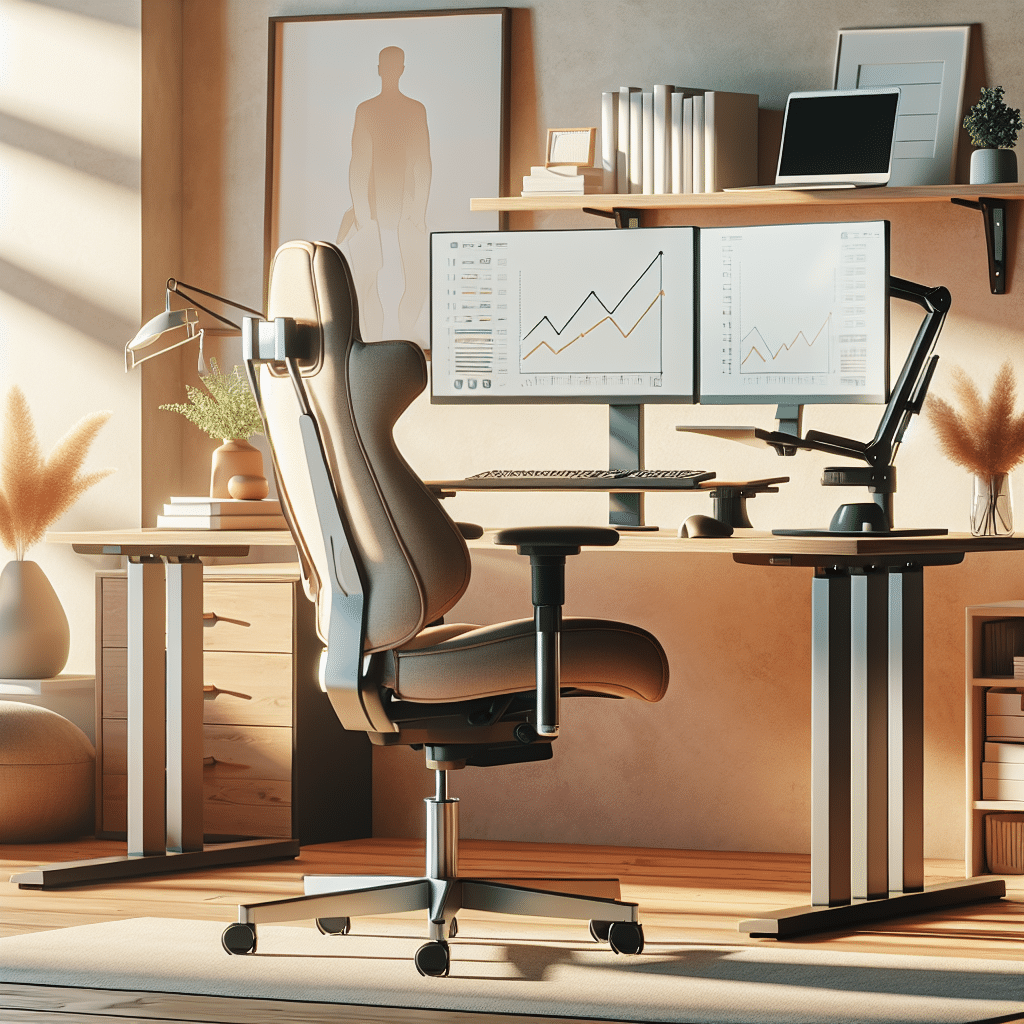Understanding Ergonomics
Creating an ergonomic workspace is essential for anyone who spends extended periods at a desk. An ergonomic setup helps reduce strain on your body, promotes better posture, and can significantly improve productivity. Here are some DIY ergonomic desk setup ideas to transform your workspace into a comfortable and health-conscious environment.
1. Desk Height Adjustment
The first step in creating an ergonomic desk setup is ensuring your desk is at the correct height. When sitting, your elbows should be at a 90-degree angle, and your forearms should be parallel to the ground. To adjust your desk:
- Measure your height: The general rule is that the desk height should be 24-28 inches from the floor.
- DIY desk risers: Use sturdy, adjustable furniture risers to raise your desk to the appropriate height.
2. Chair Selection
Your chair is a vital component of your ergonomic setup. Here’s how to choose the right one:
- Lumbar Support: Opt for a chair that has built-in lumbar support or add a lumbar cushion to maintain the natural curve of your spine.
- Adjustability: A height-adjustable chair will allow you to achieve the perfect fit.
- Material: Choose breathable fabric to keep cool during long work hours.
3. Monitor Placement
Improper monitor placement can lead to eye strain and neck discomfort. Here’s how to position your monitor correctly:
- Eye Level: The top of the monitor should be at or just below eye level. You should be able to look straight ahead or slightly down to see the screen.
- Distance: Position the monitor about an arm’s length away from your eyes. This helps reduce eye strain.
- DIY Monitor Stand: If your monitor is too low, create a stand using items like books or boxes to elevate it.
4. Keyboard Height and Position
The keyboard should also be positioned for optimal ergonomics:
- Keyboard Tray: If you have a keyboard tray, it should be positioned at the same height as your elbows when seated. Consider creating your own out of wood or using drawers.
- Wrist Support: Use a wrist rest or cushion to maintain a neutral wrist position. You can DIY a wrist rest from soft materials like foam or fabric.
5. Mouse Placement
Your mouse should be easily accessible and placed on the same level as your keyboard:
- Mouse Pad: Ensure the mouse pad is large enough to allow for fluid movement without straining.
- DPI Settings: Adjust the mouse sensitivity settings on your computer for easier navigation.
6. Document Holder
To reduce neck strain from looking down at papers, use a document holder:
- DIY Holder: Create a document holder from a binder or a tilted book stand. Position it close to the monitor to minimize movement.
7. Footrest
For shorter individuals, a footrest can alleviate pressure on the legs:
- Utilizing Books or Boxes: Stack sturdy books or small boxes to create a footrest if your feet do not touch the ground comfortably.
- Footrest Angle: The footrest should incline slightly to allow for a comfortable position.
8. Lighting
Poor lighting can lead to eye strain. Optimize your workspace lighting by considering the following:
- Natural Light: Position your desk near a window for ample natural light while avoiding glare on your screen.
- Adjustable Desk Lamp: Use a desk lamp with adjustable brightness to focus light on your workspace.
9. Cable Management
An organized workspace not only looks good but also reduces distractions.
- Cable Clips: Use adhesive cable clips to neatly route and secure cables alongside your desk.
- DIY Cable Tray: Build a cable tray using a wooden plank to keep all wires out of sight.
10. Personal Comfort Items
Make your desk a comfortable place to work by incorporating personal touches:
- Plants: Adding plants can enhance your mood and air quality.
- Comfort Items: Soft cushions or a warm blanket can provide additional comfort during colder days.
11. Standing Desk Option
Rotate between sitting and standing to improve overall health:
- DIY Standing Desk: Stack sturdy crates or use adjustable shelving to create a makeshift standing desk.
- Threshold Height Check: Ensure the height is correct, similar to your sitting desk, to prevent strain.
12. Break & Stretch Reminders
Taking regular breaks is crucial for ergonomic health.
- Timer or App: Utilize a timer or an ergonomic app to remind you to take breaks and stretch every hour.
- Stretching Area: Designate a small area in your workspace for quick stretches and mobility exercises.
13. Acoustic Panels
The noise level in your workspace can affect concentration:
- DIY Acoustic Panels: Create your own sound-absorbing panels by wrapping thick foam in fabric and mounting them on walls around your desk.
14. Keep Essentials Within Reach
Reducing body strain also includes minimizing unnecessary movement:
- Desk Organization: Use drawer organizers to keep essential items (like pens, notepads, and other tools) within easy reach.
- Sticky Note Board: Set up a small bulletin board to keep important reminders or notes visible but out of your primary workspace.
15. Ergonomic Footwear
If you spend a lot of time at your desk, consider the footwear you wear, even while sitting:
- Slippers or Supportive Shoes: Opt for comfortable, supportive footwear while you work, as this can help reduce lower body discomfort.
Implementing these DIY ergonomic desk setup ideas can make a significant difference in your comfort and productivity levels. Prioritize your health and well-being in your workspace by making these adjustments today. Enjoy a personalized and ergonomically sound environment that fosters work efficiency and physical well-being.
